Craig Kalpakjian
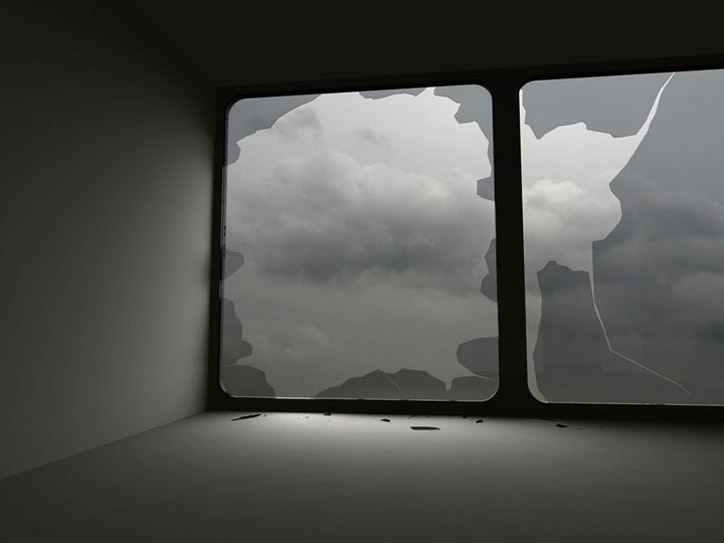
Still image of the print “Are You Feeling Better Now?“, 2006, inkjet print, 36″ x 48″

Still image of “Wish You Were Here“, 2005, inkjet print mounted on Plexiglas, 55″ x 73.5″
Notes taken from an artist talk held on September 20th, 2010 at MICA
“…geometrical space is a pure abstraction. Outer space can be visualized but cannot be seen… the doctrine that we could not perceive the world around us unless we already had the concept of space is nonsense. It is quite the other way around. We could not conceive of empty space unless we could see the ground under our feet and the sky above. Space is a myth, a ghost, a fiction for geometers.” – James J. Gibson
For a body to move in a conventional sense, it must negotiate space and time. But a ray of light whose clock is stopped (whose time dilation is complete) is not in temporal process. Consequently, in Hermann Bondi’s words, “light does not age; there is no passage of time for light” (108). Once time falls out of light’s nature, so, by implication, does space. What would it mean, after all, to travel through space timelessly? It would mean something like the following:
“In the reference frame of light, there is no space and time. If we look up at the Andromeda galaxy in the night sky, we see light that from our point of view took 2 million years to traverse that vast distance of space. But to a beam of light radiating from some star in the Andromeda galaxy, the transmission from its point of origin to our eye was instantaneous. (Haisch 31)”
Space and experience of space as abstractions. “out-of-body experiences; cinematic versus convention”
At first Craig viewed an installation and sculpture artists creating a situation where objects psychologically affect space. Less the object’s meaning versus what its usage is within the space.

Still image of “Channel (Bank Pass-Through)” 1990,
Bullet-proof plexiglass, wood, formica, hardware
14″ x 55″ x 20″

Still image of “Channel (strait)“, 1990
Bullet-proof plexiglas, stainless steel, aluminum, formica, wood
36″ x 76″ x 14″
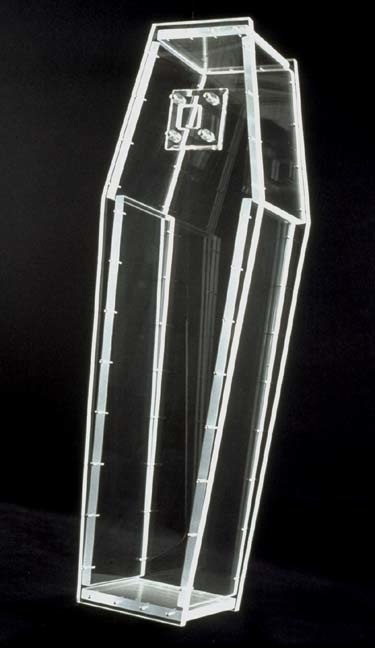
Still image of “Station (Bullet-Proof Casket)”, 1990
Bullet-proof plexiglas, one-way screws
23″ x 75″ x 17″
The usage of materials that reminded the viewer of ‘threat’ and ‘security’ was of interest. Usage of plexiglass that is bullet-proof as sculpture pieces; “What is the threat within the gallery-space?”
Craig’s sense of obsessions switched from installation based work to 3D modeling programs used to render his ideas. They then became his pieces. Most of which resulted from this particular work:

Still image of “Bay” 1990
Tensabarrier posts
72″ x 40″ x 72″
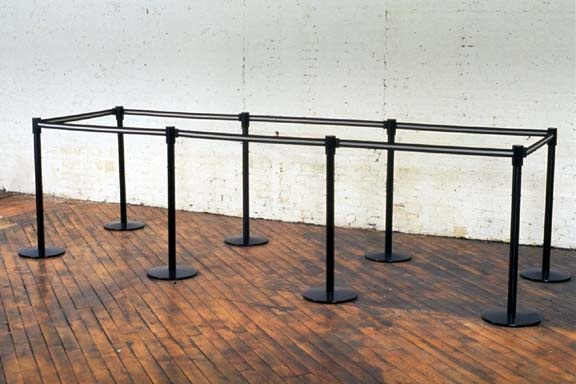
Still image of “Run” 1990
Tensabarrier posts
192″ x 40″ x 72″

Still image of a single channel video “Long Line”
Note on “Long Line”
From these installation pieces, they were rendered in a 3D program to test the limitations of materials within a set-gallery space as a practical survey of space. This led to work on the computer becoming the final piece instead.

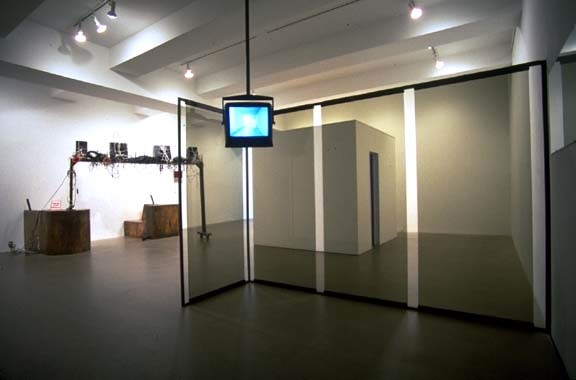
Still images of installation “Corridor” 1995,
Video installation with Glass, Steel, Rubber, Video monitor
Installation view from “Derek Jarman, Craig Kalpakjian, Julia Scher” at Andrea Rosen Gallery, 1995
Note on “Corridor”
Corridor – an endless corporate corridor that is generic in its configuration. It was at this time that Craig became interested in still 3D rendered images.
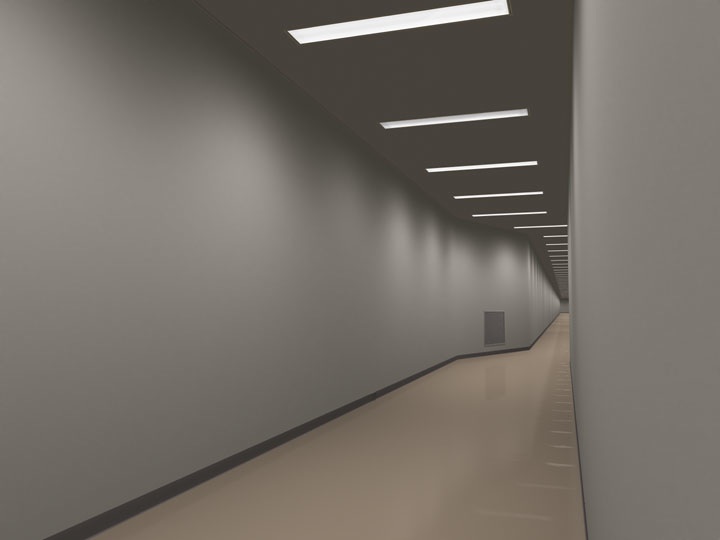
Still image of “Hall” 1999,
Chromagenic Print mounted on Aluminum,
40″ x 50″
Note on “Hall”
“Hall” was created with the novel “High Rise” in mind. The author who is British, wrote a dystopia depicting the deconstruction of civilization through corporate environments. Craig’s exploration with these 3D rendered images is to have a sense of visual order and having bits of imperfection reflect back as a threat.